Overview
Type 2 Diabetes can feel overwhelming, but understanding its root cause can empower you. At its core, this condition is primarily driven by insulin resistance, which means that the body's cells struggle to respond effectively to insulin. This struggle leads to elevated blood sugar levels, a concern that many face.
It's important to recognize that lifestyle factors play a significant role in this journey. Obesity, inactivity, and poor diet are contributors that many can relate to. You're not alone in this; many people find themselves in similar situations. Early intervention and management strategies can make a world of difference in improving health outcomes.
If you feel uncertain or anxious about your diagnosis, remember that there are resources available to support you. Taking small steps towards a healthier lifestyle can lead to positive changes. We are here to support you every step of the way, and together, we can navigate this path to better health.
Introduction
The rising tide of Type 2 diabetes presents a significant global health challenge, affecting millions and with projections indicating a sharp increase in cases. It's understandable to feel concerned about this epidemic, especially as central to it is insulin resistance—a condition that disrupts the body's ability to utilize insulin effectively. This leads to elevated blood sugar levels and a range of serious health complications. As you navigate the complexities of managing your health, understanding the root causes of this condition becomes essential.
What factors contribute to insulin resistance? How can lifestyle changes make a difference in preventing or managing Type 2 diabetes? Exploring these questions reveals not only the intricacies of this condition but also the vital steps you can take toward better health outcomes. Remember, you're not alone in this journey; we are here to support you every step of the way.
Define Type 2 Diabetes: Understanding the Condition
Condition 2 is a long-lasting ailment characterized by increased blood sugar levels resulting from the body's ineffective utilization of hormone, a phenomenon referred to as hormone resistance. Unlike form 1 diabetes, where insulin production is absent, individuals with form 2 diabetes typically produce insulin, but their cells fail to respond adequately. This dysfunction can lead to severe health complications, including cardiovascular disease, kidney damage, and neuropathy.
At T2DSolutions, we understand the urgent need for effective management strategies for individuals recently diagnosed with 2nd form of diabetes. Our mission is to provide comprehensive resources and community support to empower you on your health management journey.
The global prevalence of Type 2 Diabetes is alarming, with approximately 529 million individuals affected in 2021, projected to rise to over 1.31 billion by 2050. In the United States alone, this condition was the eighth leading cause of death in 2021, with 103,294 death certificates citing it as the underlying cause. The economic burden is similarly overwhelming, with the total expense of identified health conditions in the U.S. hitting $412.9 billion in 2022, emphasizing the pressing requirement for efficient management strategies.
Health complications associated with Type 2 Diabetes are significant. For example, this condition is the primary reason for new instances of blindness in adults aged 18-64 years, with 10.1% of diagnosed individuals reporting significant vision challenges or blindness. Additionally, chronic kidney disease impacts 39.2% of U.S. adults with sugar-related conditions, highlighting the essential requirement for regular monitoring and management of kidney health.
Managing Type 2 Diabetes often involves lifestyle modifications, including dietary changes and increased physical activity. A proactive approach is clear, as 73.1% of adults with the condition reported efforts to manage or lose weight to reduce health risks. However, only 24.1% of adults with diabetes meet the recommended goal of at least 150 minutes of leisure-time physical activity per week, indicating a gap that needs addressing.
Understanding what is the root cause of diabetes type 2 is crucial, as it is intricately linked to lifestyle factors such as diet and physical activity. The rising prevalence and associated health complications emphasize the importance of education, community support, and effective management strategies to improve health outcomes for those affected. At T2DSolutions, we are committed to being a valuable resource in this journey. You're not alone in this journey; we are here to support you every step of the way.
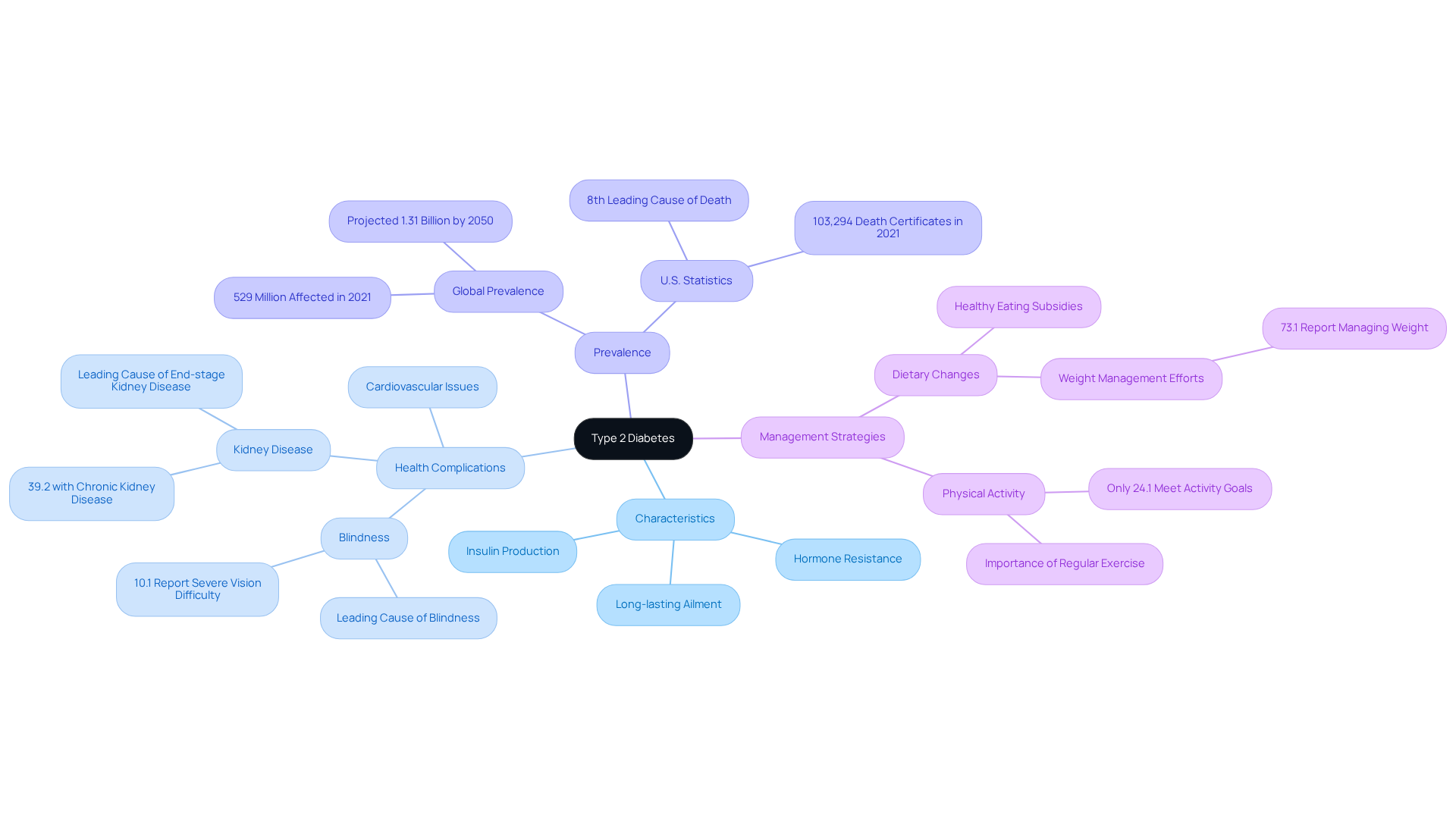
Explore Insulin Resistance: The Core Mechanism Behind Type 2 Diabetes
Insulin resistance is a condition where the body's cells—especially in the muscles, fat, and liver—struggle to respond effectively to insulin. This issue forces the pancreas to produce more hormones to keep blood sugar levels in check. Over time, the pancreas may find it challenging to meet this increased demand, leading to higher blood glucose levels, a key sign of Type 2 Diabetes. Factors contributing to insulin resistance include:
- Obesity
- Inactivity
- Genetic predisposition
Alarmingly, around 40% of young American adults show signs of difficulty regulating blood sugar, emphasizing the need for early intervention.
Recent studies indicate that insulin resistance can develop 10 to 15 years before the onset of Type 2 Diabetes, making it crucial to focus on prevention. Making lifestyle changes, such as adjusting your diet and increasing physical activity, can effectively manage glucose resistance. For example, the Diabetes Prevention Program found that participants who lost 7% of their body weight through lifestyle modifications reduced their risk of developing Type 2 Diabetes by 58%. Understanding what is the root cause of diabetes type 2 and how glucose resistance works is vital for developing effective management strategies and improving health outcomes for those at risk.
As Roy Taylor insightfully noted, 'insulin resistance is the strongest indicator of future onset of type 2 metabolic disorder.' It's also important to recognize that glucose resistance is largely an acquired condition linked to excess body fat, affecting about 22% of adults in the United States over the age of 20. As T2DSolutions prepares to launch a comprehensive resource center for diabetes education for individuals with Type 2 and Type 3 diabetes, grasping the concept of insulin resistance will be essential for those newly diagnosed.
You're not alone in this journey. We encourage you to subscribe for updates and stay informed about the latest resources and strategies to manage your health. Together, we can navigate this path toward better health and well-being.
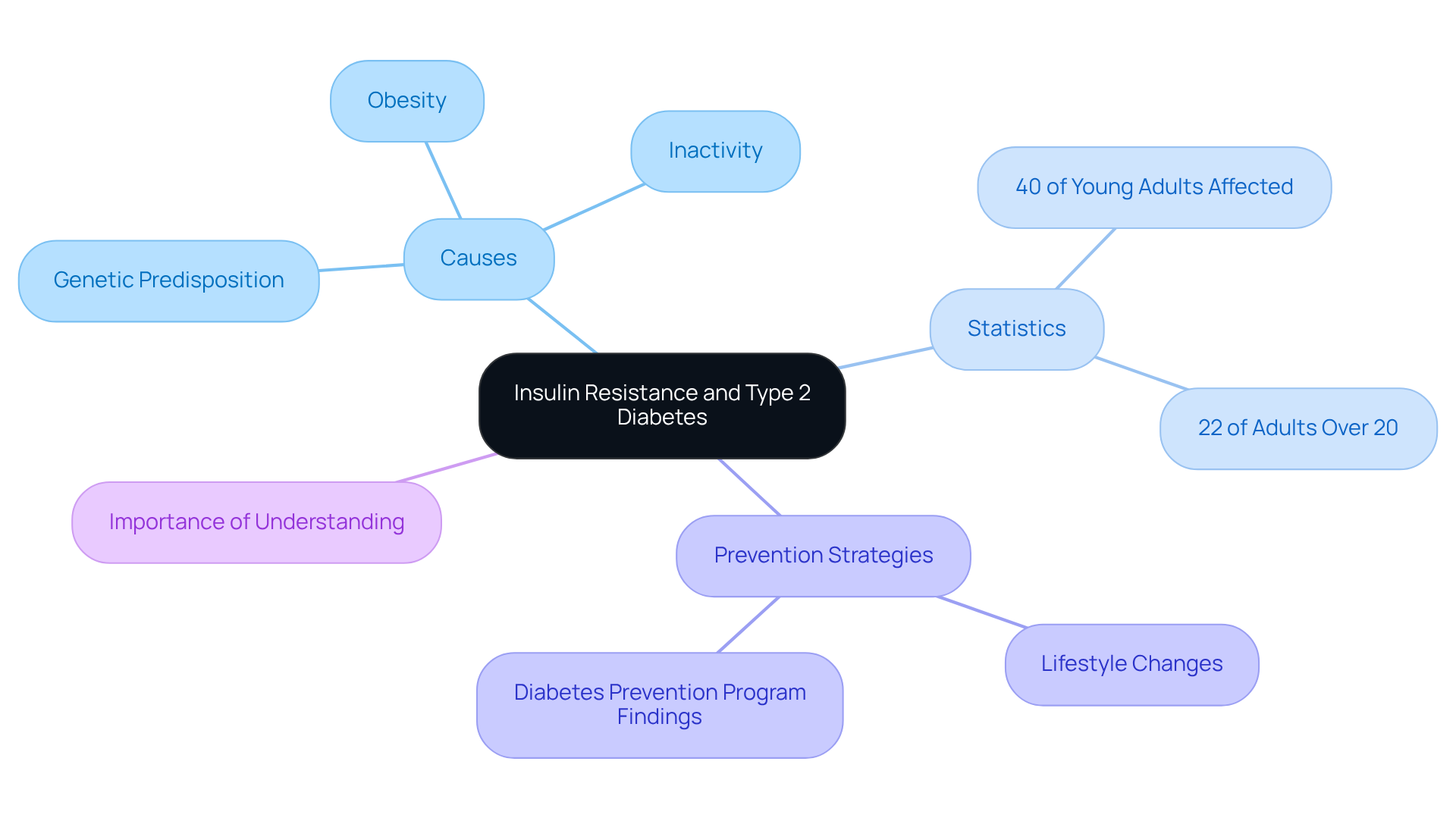
Examine Lifestyle Choices: How Diet and Activity Influence Type 2 Diabetes
Making lifestyle choices, especially regarding diet and physical activity, is essential for discovering what is the root cause of diabetes type 2 and effectively managing the condition. A balanced diet that includes whole grains, fruits, vegetables, and lean proteins can be incredibly beneficial for regulating blood sugar levels. It's important to be mindful, as diets high in refined sugars and saturated fats may worsen glucose resistance.
Regular physical activity—whether it’s walking, swimming, or cycling—can significantly enhance insulin sensitivity and support weight management. You might be surprised to learn that even modest weight loss can lead to substantial improvements in blood sugar control. Remember, incorporating healthier lifestyle habits is not just a recommendation; it’s a crucial step in understanding what is the root cause of diabetes type 2 and effectively managing the condition.
You're not alone in this journey. Many have found that taking small steps toward healthier choices can lead to meaningful changes. If you’re feeling overwhelmed, consider reaching out for support or resources that can guide you along the way. Together, we can navigate this path toward better health.
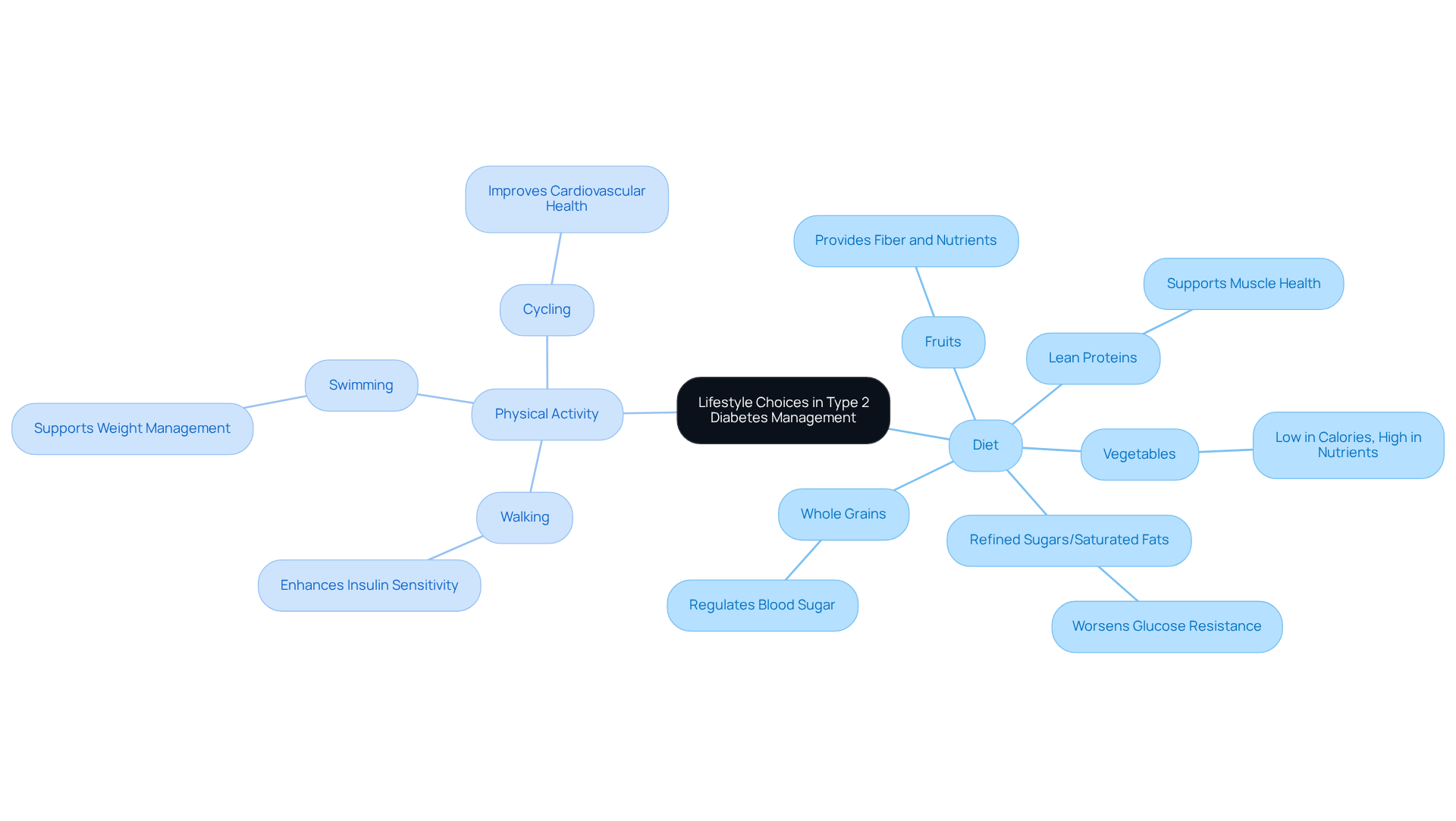
The Role of Genetics and Environment in Type 2 Diabetes
At T2DSolutions, we understand that what is the root cause of diabetes type 2 can be significantly influenced by genetics, especially for those with a family history of this condition. It's essential to recognize that environmental factors—like diet, physical activity, and socioeconomic status—are vital in exploring what is the root cause of diabetes type 2. Research shows that communities with limited access to healthy food options and safe spaces for exercise tend to experience higher rates of Type 2 Diabetes. For instance, neighborhoods that boast high walkability and green spaces are linked to a 10-20% lower risk of developing the disease. Conversely, areas with a high concentration of unhealthy food establishments often see an increase in cases.
Approximately 50% of individuals with Type 2 Diabetes remain undiagnosed, which underscores the urgent need for targeted prevention strategies that consider both genetic predispositions and environmental influences. Understanding what is the root cause of diabetes type 2 is crucial for developing effective public health strategies aimed at reducing the impact of this condition related to high blood sugar. As we anticipate that the incidence of Type 2 Diabetes could rise to 630 million by 2045, addressing these factors becomes increasingly pressing.
At T2DSolutions, we are dedicated to providing comprehensive resources and community support to empower individuals in managing their health effectively. Remember, you are not alone in this journey; we are here to support you every step of the way.
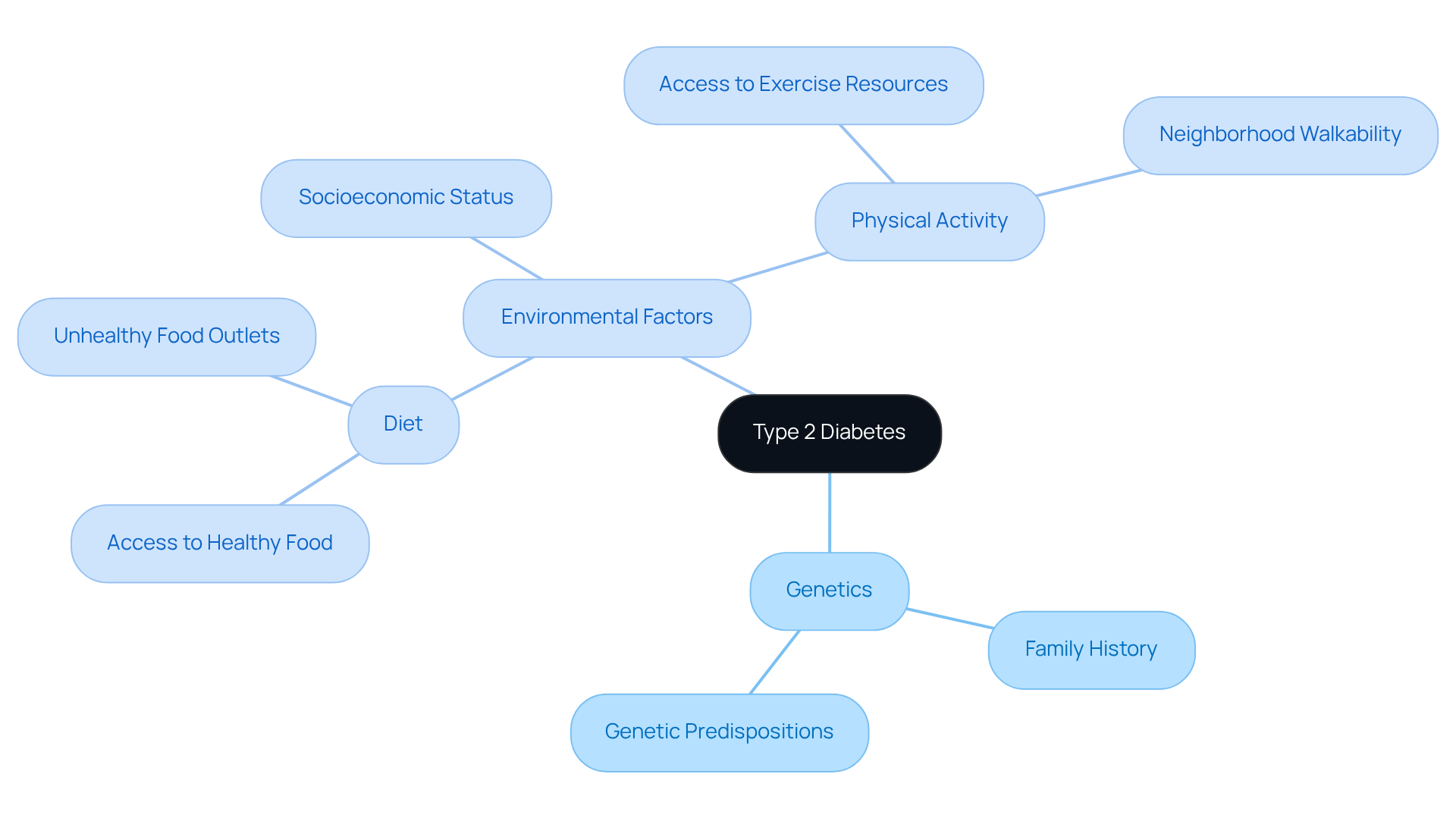
Current Research and Future Directions in Diabetes Management
Current research in Type 2 Diabetes management is increasingly focused on innovative strategies to enhance insulin sensitivity and reverse insulin resistance. It’s important to know that recent studies emphasize the effectiveness of dietary strategies, such as calorie restriction and high-fiber diets, in enhancing glycemic control and facilitating weight loss. These elements are essential for managing your condition. For instance, intensive lifestyle modifications have shown that over 60% of participants can achieve normoglycemia through structured interventions. You're not alone in this journey; many are finding success through these methods.
Moreover, the role of gut microbiota is gaining attention. Evidence suggests that a balanced gut may significantly contribute to better blood sugar regulation. This emerging area of research indicates that personalized dietary plans could optimize diabetes management by considering individual microbiome profiles. It’s encouraging to see how tailored approaches can make a difference.
In addition to dietary approaches, new medications are transforming treatment paradigms. Recent advancements include glucagon-like peptide 1 receptor agonists (GLP-1RAs) and sodium-glucose cotransporter 2 inhibitors (SGLT2is), which have demonstrated substantial benefits in improving insulin sensitivity and reducing cardiovascular risks. The adoption of these medications has surged, with their use among individuals with Type 2 diabetes increasing from 6% to 18% for GLP-1RAs in recent years. This shift in treatment guidelines reflects a growing recognition of effective options available to you.
Looking ahead, the integration of personalized medicine approaches is expected to enhance diabetes management further. Tailoring treatment plans based on genetic and lifestyle factors could lead to more effective interventions, ultimately improving health outcomes for individuals living with Type 2 Diabetes. Remember, we are here to support you every step of the way.
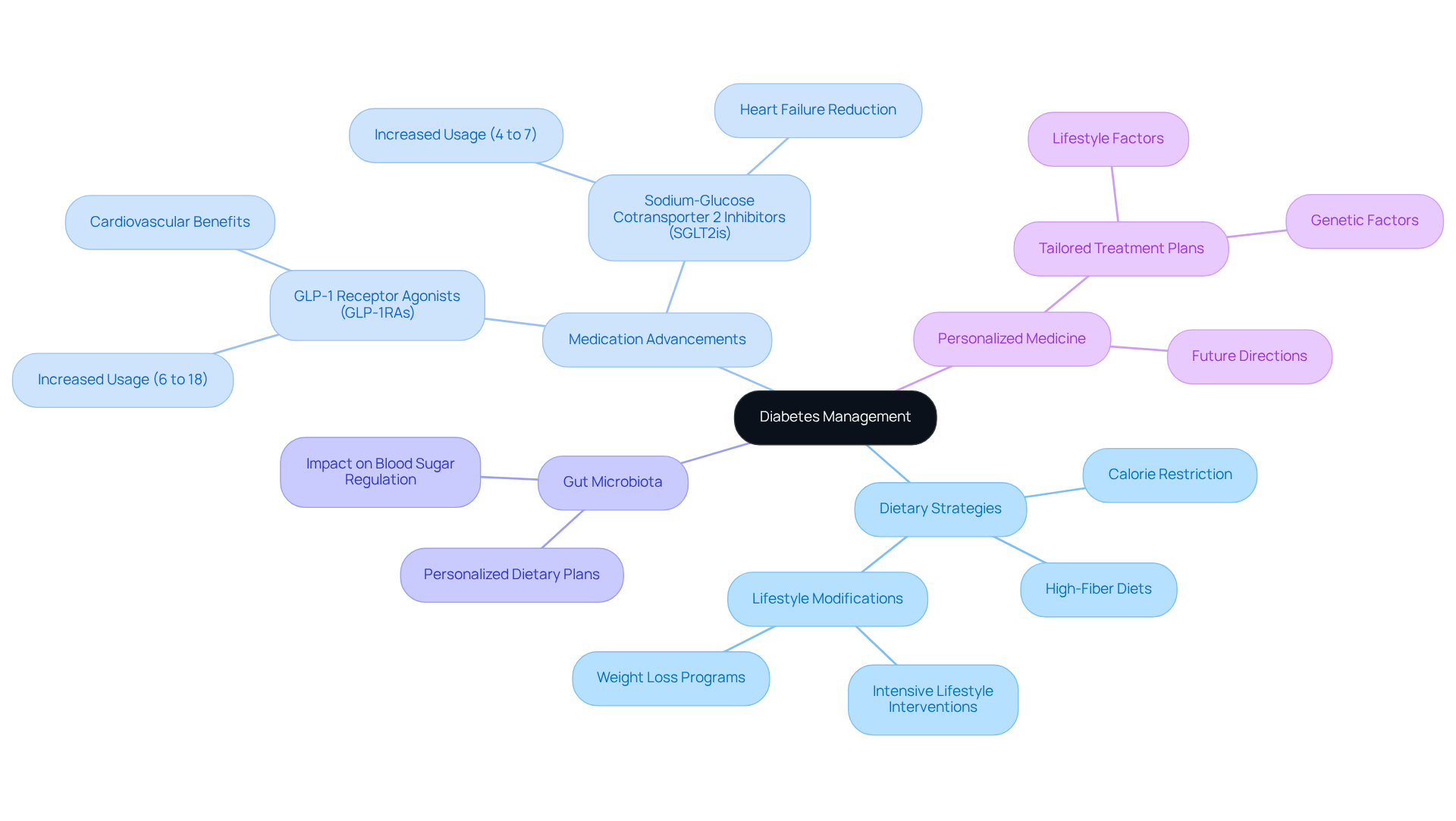
Conclusion
Understanding the root cause of Type 2 Diabetes, particularly the role of insulin resistance, is essential for effective management and prevention of this widespread condition. The insights provided throughout this article highlight the intricate relationship between lifestyle choices, genetic factors, and environmental influences that contribute to the development of insulin resistance. Recognizing these connections is crucial for individuals seeking to take control of their health and mitigate the risks associated with Type 2 Diabetes.
Key arguments presented include the alarming statistics surrounding the prevalence of Type 2 Diabetes and its associated health complications. The significant impact of lifestyle modifications is emphasized, along with promising advancements in research and treatment options. By focusing on dietary choices and physical activity, the article outlines how proactive measures can lead to improved insulin sensitivity and better blood sugar control. Furthermore, the exploration of genetic predispositions and environmental factors underscores the complexity of this condition and the need for tailored interventions.
In light of the growing prevalence of Type 2 Diabetes, it is imperative for individuals to prioritize their health through informed lifestyle choices. Seeking support from resources like T2DSolutions can make a difference. By embracing a proactive approach and staying informed about the latest research and strategies, you can navigate your journey toward better health and well-being. Remember, you’re not alone in this fight against Type 2 Diabetes. With the right knowledge and support, positive change is within reach.
Frequently Asked Questions
What is Type 2 Diabetes?
Type 2 Diabetes is a long-lasting condition characterized by increased blood sugar levels due to the body's ineffective use of insulin, known as insulin resistance. Unlike Type 1 diabetes, individuals with Type 2 diabetes typically produce insulin but their cells do not respond adequately, leading to potential health complications.
What are the health complications associated with Type 2 Diabetes?
Significant health complications include cardiovascular disease, kidney damage, neuropathy, and vision challenges. Type 2 Diabetes is the leading cause of new instances of blindness in adults aged 18-64, and it impacts kidney health, with 39.2% of affected adults experiencing chronic kidney disease.
How prevalent is Type 2 Diabetes globally?
In 2021, approximately 529 million individuals were affected by Type 2 Diabetes globally, with projections suggesting this number could rise to over 1.31 billion by 2050.
What is insulin resistance?
Insulin resistance is a condition where the body's cells, particularly in the muscles, fat, and liver, struggle to respond effectively to insulin. This condition forces the pancreas to produce more insulin to regulate blood sugar levels, which can lead to higher blood glucose levels over time.
What factors contribute to insulin resistance?
Contributing factors include obesity, inactivity, and genetic predisposition. Alarmingly, about 40% of young American adults exhibit signs of difficulty regulating blood sugar.
How can lifestyle changes impact the management of Type 2 Diabetes?
Lifestyle modifications, such as dietary changes and increased physical activity, can significantly improve glucose resistance. For instance, participants in the Diabetes Prevention Program who lost 7% of their body weight through lifestyle changes reduced their risk of developing Type 2 Diabetes by 58%.
What is the economic burden of Type 2 Diabetes in the United States?
The economic burden of Type 2 Diabetes is substantial, with the total expense of related health conditions in the U.S. reaching $412.9 billion in 2022.
What resources does T2DSolutions provide for individuals with Type 2 Diabetes?
T2DSolutions offers comprehensive resources and community support to assist individuals recently diagnosed with Type 2 Diabetes, aiming to empower them on their health management journey.



